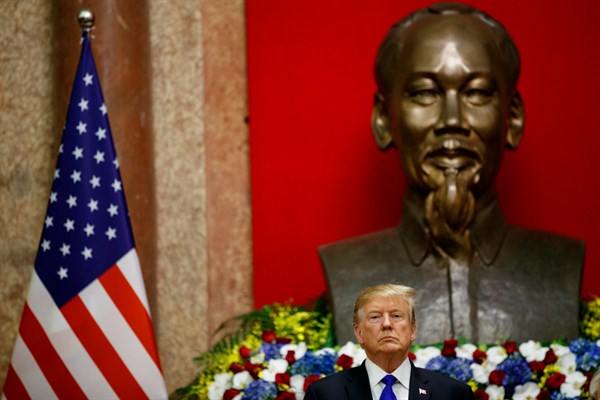Is it Vietnam’s turn in Donald Trump’s barrel? In a rambling interview last week with Fox News, Trump unexpectedly blasted Vietnam, a growing American partner in Southeast Asia and the host of Trump’s highly anticipated but ultimately failed summit with North Korean leader Kim Jong Un in February. Vietnam is “almost the single worst abuser of everybody,” Trump declared in response to a question about imposing tariffs on the country, adding that “a lot of companies are moving to Vietnam, but Vietnam takes advantage of us even worse than China.”
It was a moment that Vietnamese officials have been dreading ever since President Trump took office. Within hours of his inauguration in January 2017, Trump took the U.S. out of the Trans-Pacific Partnership, or TPP, the centerpiece of President Barack Obama’s trade policy. It would have bound the U.S., Vietnam, and ten other Pacific Rim countries in the world’s boldest free trade deal, a pact covering a third of world trade in goods and services and setting high standards for working conditions, environmental stewardship and protection of intellectual property.
The TPP’s negotiation was a coming-out of sorts for Vietnam. Hanoi had seized an opportunity to advance, under the patronage of the U.S. and its allies in Asia, toward an elite level in the world trading system. Trump’s nixing the deal was just the first of many moves for a White House that views foreign and especially trade policy as simply a matter of, “What’s in it for us?” Trump has fixated in particular on countries with large trade imbalances with the United States. Given Vietnam’s large and growing trade surplus—$42 billion in exports to the U.S. and $10 billion in imports in 2016—the clock was ticking.

